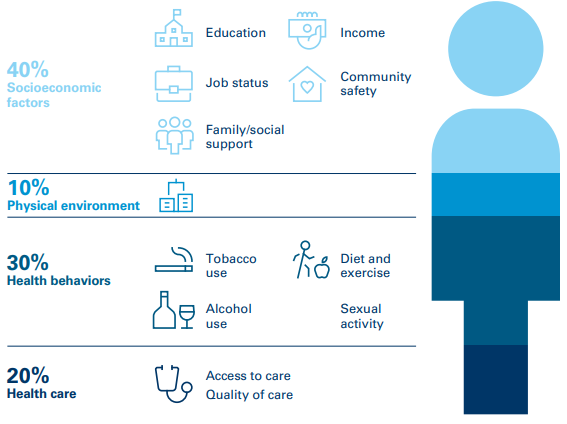About social determinants
Overwhelming evidence indicates that social determinants of health make up roughly 80% of a person’s health outcomes.1 And 68% of people experience at least one social determinant challenge at any given time.2
Diabetes is the seventh leading cause of death
Over the past two decades, the rate of diabetes has doubled in the U.S., now ranking as the seventh leading cause of death.3
The burden of this disease is not shared equally, however. Research has shown that Type 2 diabetes affects marginalized populations unevenly, with the highest prevalence among people of color.4
